|
Chapter Six
THE TWELFTH
PLANET
"The suggestions that Earth was visited by intelligent beings from
elsewhere postulates the existence of another celestial body upon
which intelligent beings established a civilization more advanced
than ours.
"....The Sumerians accepted the existence of such a "Heavenly
Abode," a "pure place," a "primeval abode." While
Enlil, Enki, and
Ninhursag went to Earth and made their home upon it, their father
Anu remained in the Heavenly Abode as its ruler.
"....The
Gods of Heaven and Earth of the ancient Near East not only
originated in the heavens but could also return to the Heavenly
Abode. Anu occasionally came down to Earth on state visits;
Ishtar
went back to Anu at least twice. Enlilís center in
Nippur was
equipped as a "bond-heaven-earth." Shamash was in charge of the
Eagles and the launching place of the rocket ships. Gilgamesh went
up to the Place of Eternity and returned to Uruk; Adapa, too, made
the trip and came back to tell about it; so did the biblical king of Tyre.
"....Two-way travel was not only possible but actually contemplated
to begin with, for we are told that, having decided to establish in
Sumer the Gateway of the Gods (Babili), the leader of the gods
explained:
When to the Primeval Source
for assembly you shall ascend,
There shall be a restplace for the night
to receive you all.
When from the Heavens
for assembly you shall descend,
There shall be a restplace for the night
to receive you all.
"Realizing that such
two-way travel between Earth and the Heavenly
Abode was both contemplated and practiced, the people of Sumer did
not exile their gods to distant galaxies. The Abode of the Gods,
their legacy discloses, was within our own solar system.
"....An Assyrian depiction of the
Gateway of Anu in the Heavenly
Abode confirms ancient familiarity with a celestial system such as
our Sun and its planets. The Gateway is flanked by two Eagles -
indicating that their services are needed to reach the Heavenly
Abode. The Winged Globe - the supreme divine emblem - marks the
gateway. It is flanked by the celestial symbols of the number seven
and the crescent, representing (we believe) Anu flanked by Enlil and
Enki.
"Where are the celestial bodies represented by these symbols? Where
is the Heavenly Abode? The ancient artist answers with yet another
depiction, that of a large celestial deity extending its rays to
eleven smaller celestial bodies encircling it. It is a
representation of a Sun, orbited by eleven planets.
"That this was not an isolated representation can be shown by
reproducing other depictions on cylinder seals, like the one from
the Berlin Museum of the Ancient Near East.
"....Now there is, of course, a catch to claiming that these
depictions - of a Sun and eleven planets - represent our solar
system, for our scholars tell us that the planetary system of which
Earth is a part comprises the Sun, Earth and Moon, Mercury, Venus,
Mars, Jupiter, Saturn, Uranus, Neptune, and Pluto. This adds up to
the Sun and only ten planets (when the Moon is counted as one).
"But that is not what the Sumerians said. They claimed that our
system was made up of the Sun and eleven planets (counting the
Moon), and held steadfastly to the opinion that, in addition to the
planets known to us today, there has been a twelfth member of the
solar system - the home planet of the Nefilim.
"We shall call it
the Twelfth Planet.
Sumerian Accuracy versus
Misconceptions....
Uranus was discovered in 1781, Neptune in 1846 and
Pluto in 1930.
"....Up to 1870, then, and for centuries before that, people
believed there were seven members of our solar system: Sun, Moon,
Mercury, Venus, Mars, Jupiter, Saturn. Earth was not counted as
planet because it was believed that these other celestial bodies
circled Earth - the most important celestial body created by God,
with Godís most important creation, Man, upon it.
"Our textbooks generally credit
Nicolaus Copernicus with the
discovery that Earth is only one of several planets in a
heliocentric (Sun-centered) system. Fearing the wrath of
the
Christian church for challenging Earth central position,
Copernicus
published his study (De revolutionibus orbium coelestium) only when
on his deathbed, in 1543."
"....The heliocentric concept was only rediscovered by
Copernicus;
and the interesting fact is that astronomers knew more in 500 B.C.
than in 500 A.D. and 1500.
"Indeed, scholars are now hard put to explain why first the later
Greeks and then the Romans assumed that Earth was flat, rising above
a layer of murky waters below which there lay Hades or "Hell," when
some of the evidence left by Greek astronomers from earlier times
indicates that they knew otherwise."
"....Hipparchus, in fact,
confirmed in his writings that his studies
were based on knowledge accumulated and verified over many
millennia. He named as his mentors "Babylonian astronomers of Erech,
Borsippa, and Babylon." Geminus of Rhodes named the "Chaldeans" (the
ancient Babylonians) as the discoverers of the exact motions of the
Moon. The historian Diodorus Siculus, writing in the first century
B.C. confirmed the exactness of Mesopotamian astronomy; he stated
that "the Chaldeans named the planets ... in the center of their
system was the Sun, the greatest light, of which the planets were
íoffspring,í reflecting the Sunís position and shine."
"The acknowledged source of Greek astronomical knowledge was, then,
Chaldea; invariable, those earlier Chaldeans possessed greater and
more accurate knowledge than the peoples that followed them. For
generations, throughout the ancient world, the name "Chaldean" was
synonymous with "stargazers," "astronomers."
Mr. Sitchin gives vast examples of the use of astronomy in the Old
Testament; the study of the constellations also; therefore:
"....Knowledge of the zodiac, the scientific division of the
heavens, and other astronomical information was thus prevalent in
the ancient Near East well before the days of ancient Greece.
"....Many such later texts were, to be sure, more astrological than
astronomical in nature. The heavens and the movements of the
heavenly bodies appeared to be a prime preoccupation of mighty
kings, temple priests, and the people of the land in general; the
purpose of the stargazing seemed to be to find in the heavens an
answer to the course of affairs on Earth: war, peace, abundance,
famine.
"....The heliacal system - the system still in use today, which
measures the rising and the setting of stars and planets in Earthís
skies relative to the Sun.
Mr. Sitchin also explains how the ancients used the
ephemeredes
(tables that listed and predicted the future positions of the
celestial bodies).
"....The unearthing of the Mesopotamian civilizations in the past
one hundred years leaves no doubt that in the field of astronomy, as
in so many others, the roots of our knowledge lie deep in
Mesopotamia. In this field, too, we draw upon and continue the
heritage of Sumer."
|
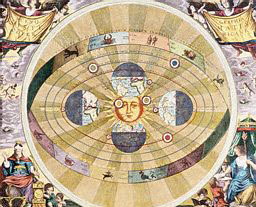
Copernican
Map of the Heavens
by Andreas Cellarius.
The Earth revolves around the Sun. |
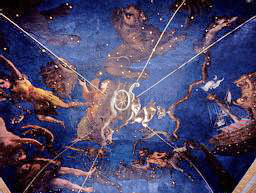
Diana with
the Signs of the Zodiac. By Lorenzo Costa the Younger
.
|
A Radiant Celestial
Body....
"....The Babylonians and the Assyrians did not invent the calendar
or the ingenious methods for its calculation. Their calendars - as
well as our own - originated in Sumer. There the scholars have found
a calendar, in use from the very earlier times, that is the basis
for all other later calendars. The principal calendar and model was
the calendar of Nippur, the seat and center of Enlil. Our
present-day one is modeled on that Nippurian calendar.
"The Sumerians consider the New Year to begin at the exact moment
when the Sun crossed the Spring equinox. Professor Stephen Langdon
(Tablets from the Archives of Drenhem) found that records left by
Dungi, a ruler of Ur circa 2400 B.C., show that the Nippurian
calendar selected a certain celestial body by whose setting against
the sunset it was possible to determine the exact moment of the New
Yearís arrival. This, he concluded, was done "perhaps 2,000 years before the era of Dungi" - that is, circa 4400
B.C.!
"....The Akkadian, Hurrian, Hittite, and other literary masterpieces
of the ancient Near East, being translations or versions of Sumerian
originals, were replete with Sumerian loanwords pertaining to
celestial bodies and phenomena.
Mr. Sitchin gives many technical details of the ancients about
astronomy. Also quotes scholars and their research into the matter.
The constellations being of great importance to the ancients of
Sumeria and beyond.
"....Because the constellations and their subdivisions, and even
individual stars within the constellations, have reached the Western
civilization with names and descriptions borrowed heavily from Greek
mythology, the Western world tended for nearly two millennia to
credit the Greek for this achievement. But it is now apparent that
the early Greek astronomers merely adopted into their language and
mythology a ready-made astronomy obtained by the Sumerians.
Several graphics in relation with the Zodiac are given in the book
"The 12th Planet."
"....Just as it is evident that the Sumerian astronomers possessed
knowledge that they could not possibly have acquired on their own,
so is there evidence to show that a good deal of their knowledge was
of no practical use to them.
"This pertains not only to the very sophisticated astronomical
methods that were used - who in ancient Sumer really needed to
establish a celestial equator, for example? - but also to a variety
of elaborate texts that dealt with the measurement of distances
between stars.
"One of these texts, known as AO.6478, the twenty six major stars
visible along the line we now call the Tropic of Cancer, and gives
distances between them as measured in three different ways:
First: "measured and weighed."
Second: in terms of degrees of the arc of the skies.
Third: in terms of the "length in the skies."
"....The availability of three different methods of measuring
distances between stars conveys the great importance attached to the
matter. Yet, who among the men and women of Sumer needed such
knowledge - and who among them could devise the methods and
accurately use them? The only possible answer is : The Nefilim had
the knowledge and the need for such accurate measurements.
"Capable of space travel, arriving on Earth from another planet,
roaming Earthís skies - they were the only ones who could, and did,
possess at the dawn of Mankindís civilization the astronomical
knowledge that required millennia to develop, the sophisticated
methods and mathematics and concepts for an advance astronomy and
the need to teach human scribes to copy and record meticulously
table upon table of distances in the heavens, order of stars and
groups of stars, heliacal risings and settings, a complex Sun-Moon
calendar, and the rest of the remarkable knowledge of both Heaven
and Earth.
Reviewing several other scholars and the Sumerian texts, it is
conclusive that the number twelve was of great significance to
Sumerians and the Nefilim.
Mr. Sitchin concluded, after the following text (K.3558):
Kakkabu/kakkabu
The number of its celestial bodies is twelve.
The stations of its celestial bodies twelve.
The complete months of the Moon is twelve.
"....We can now grasp the significance of the number twelve in the
ancient world. The Great Circle of Sumerian gods, and of all
Olympian gods thereafter, comprised exactly twelve; younger gods
could join this circle only if older gods retired. Likewise, a
vacancy had to be filled to retain the divine number twelve. The
principal celestial circle, the way of the Sun with its twelve
members, set the pattern, according to which each other celestial
band was divided into twelve segments or was allocated twelve
principal celestial bodies. Accordingly there were twelve months in
a year, twelve double-hours in a day. Each division of Sumer was
assigned twelve celestial bodies as a measure of good luck.
Here are other twelves mentioned in the book among several others:
"Twelve Greek Titans, twelve Tribes of Israel, twelve parts of the
magical breastplate of the Israelite High Priest.... Twelve Apostles
of Jesus, and in our decimal system we count one to twelve, and only
after twelve we return to "ten and three" (thirteen) and so on.
"....Teaching humanity the true nature of Earth and the heavens, the
Nefilim informed the ancient astronomers-priests not only of the
planets beyond Saturn but also of the existence of the most
important
planet, the one from which they came:
"THE TWELFTH PLANET"
|
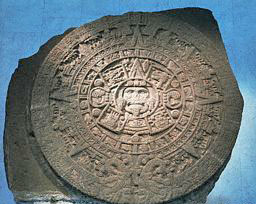
Calendar
Stone
|
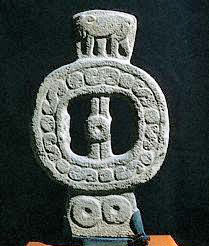
Huastec
Calendar |
|

Prometheus frieze.
A scene from the myth of the Greek Titan
|
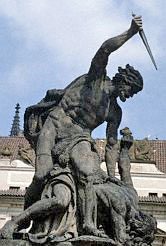
Detail
showing Figure with Sword from Battling Titans by Ignac
Platzer. |
Return
Chapter Seven
THE EPIC OF
CREATION
Enuma Elish....
"....An Akkadian seal from the third millennium B.C., now at the
Vorderasiatische Abteilung of the State Museum in East Berlin
(catalogued VA/243), departs from the usual manner of depicting the
celestial bodies. It does not show them individually but rather as a
group of eleven globes encircling a large, rayed star. It is clearly
a depiction of the solar system as it was known to the Sumerians: a
system consisting of twelve celestial bodies.
THE MOON
"....Treating the
Moon as a proper celestial body, the Sumerian
depiction fully accounts for all of our known planets, places them
in the correct order (with the exception of Pluto), and shows them
by size.
"....The Apollo 16 astronauts found on the Moon rocks (called
breccias) that result from the shattering of solid rock and its
rewelding together by extreme and sudden heat. When and how were
these rocks shattered, then re-fused? Other surface materials on the
Moon are rich in rare radioactive potassium and phosphorus,
materials that on Earth are deep down inside.
"Putting such findings together, scientists are now certain that the
Moon and Earth, formed of roughly the same elements at about the
same time, evolved as separate celestial bodies.
"In the opinion of the scientists of the U.S. National Aeronautics
and Space Administration (NASA), the Moon evolved "normally" for its
first 500 million years."
"....The Sumerians, then, were right to depict the
Moon as a
celestial body in its own right...."
PLUTO
"....The planet
Pluto has been called "the enigma." While the orbits
around the Sun of the other planets deviate only somewhat from a
perfect circle, the deviation (eccentricity) is such that it has the
most extended and elliptical orbit around the Sun...."
"....Because of its unusual characteristics, it has been suggested
that this "misfit" might have started its celestial life as a
satellite that somehow escaped its master and went into orbit around
the Sun on its own."
"This, as we shall soon see, is indeed what
happened - according to
the Sumerian texts.
THE ASTEROID BELT
"Toward the end of the eighteenth century, even before
Neptune had
been discovered, several astronomers demonstrated that "the planets
were placed at certain distances from the Sun according to some
definitive law. The suggestion, that came to be known as Bodeís Law,
convinced astronomers that a planet ought to revolve in a place
where hitherto no planet had been known to exist - that is, between
the orbits of Mars and Jupiter."
"....On the first day of the nineteenth century, the Italian
astronomer Giuseppe Piazzi discovered at the exact indicated
distance a very small planet (485 miles across), which he named
Ceres...."
"....To date, nearly 3,000 asteroids have been counted
orbiting the Sun in what is now called the asteroid belt."
Many questions arise about the
asteroid belt, but the answers to
these puzzles have been handed down to us from antiquity.
Mr. Sitchin then goes to mention about the vast literature existing,
comparing the Mesopotamian text of the Chaldean Genesis with
Biblical accounts of Genesis. Being of extreme importance are "The
Seven Tablets of Creation."
"....Now called "The Creation Epic," the text was known in antiquity
by its opening words,
Enuma Elish ("When in the
Heights").
"....As more tablets and fragments were found and translated, it
became evident that the text was not a simple literary work: It was
the most hallowed historical-religious epic of Babylon, read as part
of the New Year rituals.
"....There is enough evidence to show that the Babylonian version of
the epic was a masterful political-religious forgery of earlier
Sumerian versions, in which Anu, Enlil, and Ninurta were the heroes.
"....Most scholars see it as a philosophical work...."
"....But why not take the epic at face value, as nothing more nor
less the statement of cosmologic facts as known to the Sumerians, as
told them by the Nefilim?
"The stage on which the celestial drama of
Enuma Elish unfolds is
the primeval universe. The celestial actors are the ones who create
as well as the ones being created."
Mr. Sitchin describes Act 1 of the Epic, where
AP.SU ("one who
exists from the beginning"); MUM.MU (one "who was born"); and
TIAMAT
("maiden of life") existed. They were the Sun; Mercury "the fast
messenger of the gods" as the Romans and Greeks thought of it;
Tiamat, was the "monster" which later "Marduk," the arriving planet
from deep space, shattered it.
The space between Apsu and
Tiamat (also known as the Virgin Mother
of the first Divine Trinity) was not void, it was filled with the
primordial elements, the primordial waters. These "waters"
"commingled" and a pair of celestial gods - planets - were formed in
the space between Apsu and Tiamat.
-
LAHMU (Mars "the God of War").
-
LAHAMU (Venus, both "the
Goddess of Love and War").
-
ANSHAR (Saturn, "foremost of the heavens," to whom a satellite was
born,
-
GAGA (Pluto,
counselor and emissary of Anshar) Sumerians
placed Pluto next to Saturn not beyond Neptune).
-
KI.SHAR (Jupiter, "foremost of the firm lands").
-
ANU (Uranus, (he of the heavens").
-
NUDIMMUD ((Ea) "artful creator").
"....As Act 1 of the "Epic of Creation" came to an end, there was a
solar system made up of the Sun and nine planets.
"Where were the Earth and the Moon?
They were yet to be created,
products of the forthcoming collision.
The Epic is beautifully explained in the book "The 12th Planet,"
with the rich depth of thought the ancients placed in their
writings.
|
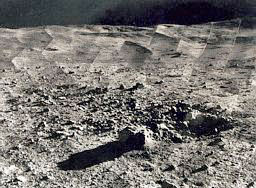
Surface
of the Moon.
Taken by Surveyor Moon Lander, prior to the landing of
man. |
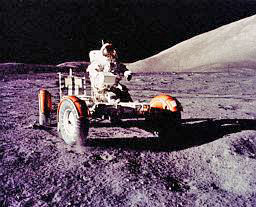
Astronaut
on Stripped Down Roving Lunar Vehicle. Apollo 16
Mission. |
|

Full Moon
above the Earth. From Space Shuttle Columbia.
|
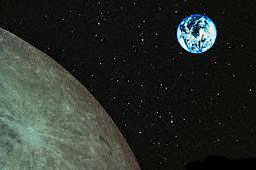
Moon and
Full Earth in Space
|
|
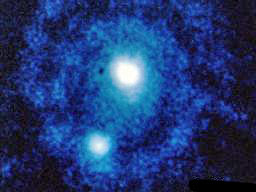
Pluto and
Charon |
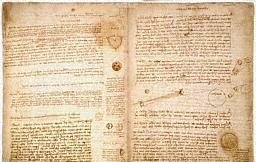
Sheet
discussing Centers of Gravity of the Earth and Moon from
Codex Leicester by Leonardo da Vinci
.
|
|
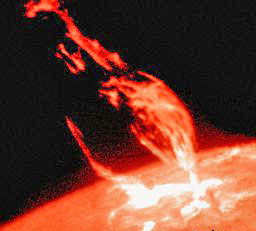
Solar
Prominence erupting from the Sunís Surface.
|
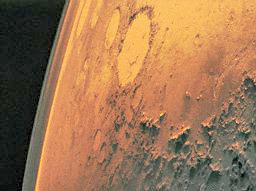
Craters
on Surface of Mars. Taken by Viking 1
|
|
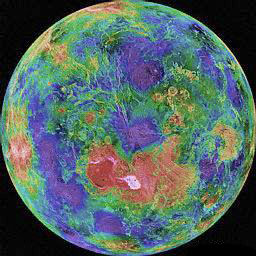
Radar
Image of the Northern Hemisphere of Venus. Mosaic images
taken by the Magellan Space Probe. Centered on North
Pole. |
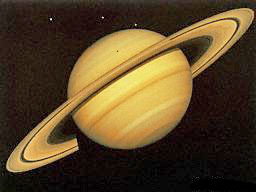
Global
View of Saturn and its Rings, taken by one of the
Voyager probes.
|
|
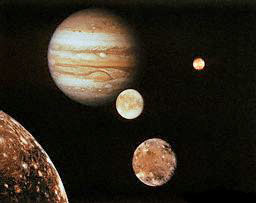
Jupiter
and its Large Moons. Taken by the Voyager I Space Probe.
Io is closer to Jupiter followed by Europa, Ganymede and
Callisto
|
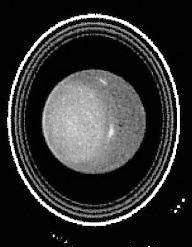
Hubble
Image of Uranus and its Rings. |
|
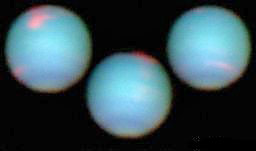
Neptuneís
Clouds: Three Views, taken by Hubble Telescope in 1994
|
MARDUK ... The
Arrival ...
"With the end of the majestic drama of the birth of the planets, the
authors of the Creation epic now raise the curtain to Act II, on a
drama of celestial turmoil. The newly created family of planets were
gravitating toward each other; they were converging on Tiamat,
disturbing and endangering the primordial bodies.
The divine brothers banded together;
They disturbed Tiamat as they surged back and forth.
They were troubling the "belly" of Tiamat
By their antics in the dwellings of heaven.
Apsu could not lessen their clamor;
Tiamat was speechless at their ways.
Their doings were loathsome....
Troublesome were their ways.
"We have here obvious erratic orbits. The new planets "surged back
and forth"; they got too close to each other ("banded together");
they interfered with Tiamatís orbit; they got too close to her
"belly"; their ways were troublesome. Though it was Tiamat that was
principally endangered, Apsu, too, found the planetís ways
"loathsome". He announced his intention to "destroy, wreck their
ways."
Apparently Ea (Neptune) with its outer most orbit seemed to
neutralize the effect of the primordial "waters".
"....Did its own orbit around the
Sun affect the Sunís magnetism and
thus its radioactive outpourings? Or did Neptune itself emit, upon
its creation, some vast radiations of energy?" "....Whatever the
effects were, the epic likened them to a "pouring of sleep" - a
calming effect - upon Apsu (the Sun). Even "Mummu, (Mercury) the
Counselor, was powerless to stir."
"....By depriving the Sun of its creativity - stopping the process
of emitting more energy and matter to form additional planets - the
gods (planets) brought temporary peace to the solar system.
"....How long was it before the celestial peace was broken once
more? The epic does not say. But it does continue, with little
pause, and raises the curtain to Act III:
In the Chamber of Fates, the place of Destinies,
A god was engendered, most able and wisest of gods;
In the heart of the Deep was MARDUK created.
THE ARRIVAL
"A new celestial "god" - a
new planet - now joins the cast. He was
formed in the Deep, far out in space, in a zone where orbital motion
- a planetís "destiny" - had been imparted to him. He was attracted
to the solar system by the outermost planet: "He who begot him was
Ea" (Neptune). The new planet was a sight to behold.
"....As
Marduk neared the other planets, "they heaped upon him their
awesome flashes," and he shone brightly, "clothed with the halo of
ten gods." His approach thus stirred electrical and other emissions
from the other members of the solar system. And a single word here
confirms our decipherment of the Creation epic: Ten celestial bodies
awaited him - the Sun and only nine other planets. And as
Marduk, still in a very plastic stage as it must have been,
passes Ea/Neptune, the gravitational pull bulged one side. Later, as
he passes Anu/Uranus, matter tore off and four satellites were
formed for Marduk.
"....The approach of
Marduk soon began to disturb Tiamat and
the
inner planets (Mars, Venus, Mercury).
"....The gravitational pull of the
large approaching planet soon
began to tear away parts of Tiamat. From her midst there emerged
eleven "monsters" ....satellites who separated themselves from her
body and "marched at the side of Tiamat."
"....Of particular importance to the epic and to Mesopotamian
cosmogony was Tiamatís chief satellite, who was named
KINGU, "the
first born among the gods who formed her assembly."
The epic continues giving beautiful recounts of the nearing to
Saturn, it was at this point that Pluto loosened from its course and
went further to the outer edge.
Finally Marduk and
Tiamat confront each other.
"Here, then, is a most original theory explaining the celestial
puzzles still confronting us. An unstable solar system, made up of
the Sun and nine planets, was invaded by a large, comet-like planet
from outer space. It had acquired seven satellites on its passing.
"But the two planets did not collide, a fact of cardinal
astronomical importance: It was the satellites of Marduk that
smashed into Tiamat, and not Marduk himself. They "distended"
Tiamatís body, made in her a wide cleavage.
"....The first encounter between
Marduk and Tiamat left her fissured
and lifeless; but her final fate was still to be determined by
future encounters between the two. Kingu, leader of
Tiamatís
satellites, was also to be dealt with separately. But the fate of
the other ten, smaller satellites of Tiamat was determine at once:
After he had slain Tiamat, the leader,
Her band was shattered, her host broken up.
The gods, her helpers who marched at her side,
Trembling with fear,
Turned their backs about so as to save
and preserve their lives.
"Can we identify this "shattered ... broken" host that trembled and
"turned their backs about" - reversed their direction?
"By doing so we offer an explanation to yet another puzzle of our
solar system - the phenomenon of the comets.
Mr. Sitchin goes to explain how, then he concludes:
"Astronomers are unable to say what force, what event
created the
comets and threw them into their unusual orbits. Our answer:
Marduk.
Sweeping in the reverse direction, in an orbital plane of his own,
he shattered, broke the host of Tiamat into smaller comets and
affected them by his gravitational pull, his so-called net.
"Having "vanquished"
Tiamat, Marduk sailed on in the heavens, out
into space, around the Sun, and back to retrace his passage by the
other planets....
"....Then his new orbital path returned
Marduk to the scene of his
triumph, "to strengthen his hold on the vanquished gods, "Tiamat and
Kingu."
Earth and Moon....
Heaven and Earth.... "Station Nibiru"....
"As the curtain is about to rise on
Act V, it will be here - and
only here, though this has not hitherto been realized - that the
biblical tale of Genesis joins the Mesopotamian "Epic of Creation";
for it is only at this point that the tale of the Creation of Heaven
and Earth really began.
"Completing his first - ever orbit around the
Sun, Marduk "then
returned to Tiamat, whom he had subdued."
"Marduk himself now hit the defeated planet,
splitting Tiamat in
two, severing her "skull" or upper part. Then another of
Mardukís
satellites, the one called North Wind, crashed into the separated
half. The heavy blow carried this part - destined to become Earth -
to an orbit where no planet had been orbiting before.
"Earth had been created!
"The lower part had another fate: on the second orbit,
Marduk
himself hit it, smashing it to pieces.
"The pieces of this broken half were hammered to become a "bracelet"
in the heavens, acting as a screen between the inner planets and the
outer planets. They were stretched out into a "great band."
The asteroid belt
had been created.
"Astronomers and physicists recognize the existence of great
differences between the inner, or "terrestrial" planets (Mercury,
Venus, Earth and its Moon, and Mars) and the outer planets (Jupiter
and beyond), two groups separated by the asteroid belt. We now find,
in the Sumerian epic, ancient recognition of these phenomena."
"Every puzzle that we have mentioned is answered by the "Epic of
Creation" as we have deciphered it. Moreover, we also have the
answer to the question of why Earthís continents are concentrated on
one side of it and a deep cavity (the Pacific Oceanís bed) exists on
the opposite side...."
"....Tiamat was called the
Watery Monster,
and it stands to reason that Earth, as part of Tiamat, was equally
endowed with these waters....
"BIBLICAL SCHOLARS NOW RECOGNIZE THAT THE HEBREW
TEHOM ("WATERY
DEEP") STEMS FROM TIAMAT; THAT TEHOM-RABA MEANS "GREAT TIAMAT," AND
THAT THE BIBLICAL UNDERSTANDING OF PRIMEVAL EVENTS IS BASED UPON THE
SUMERIAN COSMOLOGIC EPICS. IT SHOULD ALSO BE CLEAR THAT FIRST AND
FOREMOST AMONG THESE PARALLELS ARE THE OPENING VERSES OF THE BOOK OF
GENESIS, DESCRIBING HOW THE WIND OF THE LORD HOVERED OVER THE WATERS
OF TEHOM, AND HOW THE LIGHTNING OF THE LORD (MARDUK IN THE
BABYLONIAN VERSION) LIT THE DARKNESS OF SPACE AS IT HIT AND SPLIT
TIAMAT, CREATING EARTH AND THE RAKIA (LITERALLY, "THE HAMMERED
BRACELET"). THIS CELESTIAL BAND (HITHERTO TRANSLATED AS "FIRMAMENT")
IS CALLED "THE HEAVEN."
"....As part of the new celestial order upon
Earth, Marduk "made the
divine Moon appear ... designated him to mark the night, define the
days every month....
"....Earth is Tiamat
reincarnated. The Moon is called Earthís
"protector"; that is exactly what Tiamat called
Kingu, her chief
satellite.
"....Marduk, then, did not destroy
Kingu. Shrunk to a smaller size,
Kingu remained a "god" - a planetary member of our solar system.
Without an orbit he could only become a satellite again. As
Tiamatís
upper part was thrown into a new orbit (as the new planet Earth), we
suggest, Kingu was pulled along. Our Moon, we suggest, is
Kingu,
Tiamatís former satellite.
"The puzzles of our solar system - the oceanic cavities upon Earth,
the devastation upon the Moon, the reverse orbits of the comets, the
enigmatic phenomena of Pluto - all are perfectly answered by the
Mesopotamian Creation epic, as deciphered by us.
"Having thus "constructed the stations" for the planets, (orbits),
Marduk took for himself "station Nibiru," and "crossed the heavens
and surveyed" the new solar system. It was now made up of twelve
celestial bodies, with twelve Great Gods as their counterparts.
Return
Chapter Eight
KINGSHIP OF
HEAVEN
Marduk = Nibiru .... Planet of Crossing ....
"Studies of THE "EPIC OF CREATION" and parallel texts, (for example,
S. Langdonís The Babylonian Epic of Creation) show that sometime
after 2000 B.C., Marduk, son of Enki, was the
successful winner of a
contest with Ninurta, son of Enlil, for supremacy among the gods.
The Babylonians then revised the original Sumerian "Epic of
Creation," expunged from it all references to Ninurta and most
references to Enlil, and renamed the invading planet
Marduk.
"The actual elevation of Marduk to the status of "King of the Gods"
upon Earth was thus accompanied by assigning to him, as his
celestial counterpart, the planet of the Nefilim, the Twelfth
Planet. As "Lord of the Celestial Gods [the planets]"
Marduk was
thus also "King of the Heavens."
"The "Epic of Creation" clearly states that
Marduk was an invader
from outside the solar system, passing by the outer planets
(including Saturn and Jupiter) before colliding with Tiamat. The
Sumerians called the planet NIBIRU, the "planet of crossing."
The Babylonian version of the epic retained astronomical
information, which:
"....provide the additional and conclusive information that in
dividing the other planets into two equal groups, (by the asteroid
belt) the Twelfth Planet in "the midst of Tiamat keeps crossing."
Its orbit takes it again and again to the site of the celestial
battle, where Tiamat used to be.
"If
Mardukís orbit takes it where Tiamat once was, relatively near
us (between Mars and Jupiter), why have we not yet seen this planet,
which is supposedly large and bright?
"....It thus occurred to
Franz Kugler (Sternkunde und Sterndienst in
Babylon) that Marduk was a fast-moving celestial body, orbiting in a
great elliptical path just like a comet.
"Such an elliptical path, focused on the
Sun as a center of gravity,
has an apogee - the point farthest from the Sun, where the return
flight begins - and a perigee - the point nearest to the Sun, where
the return to outer space begins.
"We find that two such "bases" are indeed associated with
Marduk in
the Mesopotamian texts. The Sumerian texts described the planet as
going from AN.UR ("Heavenís base") to E.NUN ("lordly abode").
The Creation epic said of
Marduk:
He crossed the Heaven and surveyed the regions...
The structure of the Deep the Lord then measured.
E-Shara he established as his outstanding abode;
E-Shara as a great abode in the Heaven he established.
"One "abode" was thus "outstanding" - far in the deep region of
space. The other was established in the "Heaven," within the
asteroid belt, between Mars and Jupiter.
"Following the teaching of their Sumerian forefather,
Abraham of Ur,
the ancient Hebrews also associated their supreme deity with the
supreme planet...."
"The Book of Job, having described the
collision, contains these
significant verses telling us where the lordly planet had gone:
Upon the Deep he marked out an orbit;
Where light and darkness [merge]
In his farthest limit.
"Not less explicit, the Psalm outlined the planetís majestic course:
The Heavens bespeak the glory of the Lord;
The Hammered Bracelet proclaims his handiwork...
He comes forth as a groom from the canopy
Like an athlete he rejoices to run the course.
From the end of heavens he emanates,
And his circuit is to their end.
"Recognized as a great traveller in the heavens, soaring to immense
heights at its apogee and then "coming down, bowing unto the Heaven"
at its perigee, the planet was depicted as a Winged Globe.
"....Central to the religious beliefs and astronomy of the ancient
world was the conviction that the Twelfth Planet, the "Planet of the
Gods" remained within the solar system and that its grand orbit
returned it periodically to Earthís vicinity. The pictographic sign
of the Twelfth Planet, the "Planet of Crossing,"
was a cross. This
cuneiform sign, which also meant "Anu" and "divine" (a cross with a
triangle on top arm, and two triangles on left arm touching each
other by the angles) evolved in the Semitic languages to the letter
tav, (a slanted cross with lower arm longer than the other three)
which meant "the sign."
Mesopotamian and
Biblical Records.... Number 3,600....
The reader is reminded, that the Hebrews associated their supreme
deity with the supreme planet. At this point, this becomes most
important to understand what the Biblical records are talking about:
The Twelfth Planet, mainly, in the prophetic context.
"Indeed, all the peoples of the ancient world considered the
periodic nearing of the Twelfth Planet as a sign of upheavals, great
changes, and new eras. The Mesopotamian texts spoke of the planetís
periodic appearance as an anticipated, predictable, and observable
event....
".... Many of the texts dealing with the planetís arrival were omen
texts prophesying the effect the event would have upon Earth and
Mankind....
"....Like the Mesopotamian savants, the Hebrew prophets considered
the time of the planetís approaching Earth and becoming visible to
Mankind as ushering in a new era. The similarities between the
Mesopotamian omens of peace and prosperity that would accompany the
Planet of the Throne of Heaven, and the biblical prophesies of the
peace and justice that would settle upon Earth after the Day of the
Lord, can best be expressed by the words of Isaiah:
And it shall come to pass at the End of Days
...the Lord shall judge among the nations
and shall rebuke many peoples.
They shall beat their swords into ploughshares
and their spears into pruning hooks;
nation shall not lift up sword against nation.
"In contrast with the blessings of the new era following the
Day of
the Lord, the day itself was described by the Old Testament as a
time of rains, inundations, and earthquakes. If we think of the
biblical passages as referring, like their Mesopotamian
counterparts, to the passage in Earthís vicinity of a large planet
with a strong gravitational pull, the words of Isaiah can be plainly
understood:
Like the noise of a multitude in the mountains,
a tumultuous noise like of a great many people,
of kingdoms of nations gathered together;
it is the Lord of Hosts,
commanding a Host to battle.
From a far away land they come,
from the end-point of the heaven
do the Lord and his weapons of wrath
come to destroy the whole Earth....
Therefore will I agitate the Heaven,
and Earth shall be shaken out of its place
when the Lord of Hosts shall be crossing,
the day of his burning wrath.
"While on Earth "mountains shall melt ... valleys shall be cleft,"
Earthís axial spin would also be affected. The prophet Amos
explicitly predicted:
It shall come to pass on that Day,
sayeth the Lord God,
that I will cause the Sun to go down at noon
and I will darken the Earth in the midst of daytime.
"Announcing, "Behold, the Day of the Lord is come!" the prophet
Zechariah informed the people that this phenomenon of an
arrest in
Earthís spin around its own axis would last only one day:
And it shall come to pass on that Day
there shall be no light - uncommonly shall it freeze.
and there shall be one day, known to the Lord,
when at eve-time there shall be light.
"On the Day of the Lord, the prophet
Joel said, "the Sun and Moon
shall be darkened, the stars shall withdraw their radiance"; "the
Sun shall be turned into darkness, and the Moon shall be as red
blood."
"Mesopotamian texts exalted the planetís radiance and suggested that
it could be seen even at daytime: "visible at sunrise, disappearing
from view at sunset." A cylinder seal, found at Nippur, depicts a
group of plowmen looking up with awe as the Twelfth Planet (depicted
with its cross symbol) is visible in the skies.
"The ancient peoples not only expected the
periodic arrival of the
Twelfth Planet but also charted its advancing course.
"....Among the many Mesopotamian texts that dealt with the subject,
one is quite clear:
Planet of the god Marduk:
Upon its appearance: Mercury.
Rising thirty degrees of the celestial arc: Jupiter.
When standing in the place of the celestial battle: Nibiru.
Mr. Sitchin explains the time when the Twelfth planet will align
itself with Mercury; when crossing Jupiter at certain degrees (which
he points out); and when arriving at the point of the celestial
battle with Tiamat.
"The anticipation of the
Day of the Lord in the ancient Mesopotamian
and Hebrew writings (which were echoed in the New Testamentís
expectations of the coming of the Kingship of Heaven) was thus based
on the actual experiences of Earthís people: their witnessing the
periodic return of the Planet of Kingship to Earthís vicinity.
"The planetís periodic appearance and disappearance from Earthís
view confirms the assumption of its permanence in solar orbit."
Also Mr Sitchin explains
Nibiruís orbit, and that the planet would
be found by todayís astronomers in the same manner that Neptune and
Pluto were found, mathematically and by disturbances of other
planetís orbits.
"....The Mesopotamian and biblical sources present strong evidence
that the orbital period of the Twelfth Planet is 3,600 years. The
number 3,600 was written in Sumerian as a large circle. The epithet
for the planet - shar ("supreme ruler") also meant "a perfect
circle" a "completed cycle." It also meant the number
3,600 and the
identity of the three terms - planet/orbit/3,600 - could not be a
mere coincidence.
First King.... Ten Rulers before Deluge.... What is a Year?....
Life Beyond Earth?....
"Berossus, the Babylonian priest-astronomer-scholar, spoke of ten
rulers who reigned upon Earth before the Deluge.
Summarizing the writings of
Berossus, Alexander Polyhistor wrote:
"In the second book was the history of the ten kings of the
Chaldeans, and the periods of each reign, which consisted
collectively of an hundred and twenty sharís, or four hundred and
thirty-two thousand years (432,000) reaching to the time of the
Deluge"
"Abydenus, a disciple of Aristotle, also quoted
Berossus in terms of
ten pre-Diluvial rulers whose total reign numbered 120 sharís. He
made clear that these rulers and their cities were located in
ancient Mesopotamia:
"It is said that the first king of the land was Alorus....He reigned
ten sharís.
Now, a shar is esteemed to be three thousand six hundred years....
After him Alaprus reigned three sharís, to him succeeded Amilarus
from the city of panti-Biblon, who reigned thirteen sharís....
After him Ammenon reigned twelve sharís; he was of the city of
panti-Biblon. Then Megalurus of the same place, eighteen sharís.
Then Daos, the Shepherd, governed for the space of ten sharís....There
were afterwards other rulers, and the last of all Sisithrus; so that
in the whole, the number amounted to ten kings, and the term of
their reigns to an hundred and twenty sharís."
"Apollodorus of Athens also reported on the pre-historical
disclosures of Berossus in similar terms: "Ten rulers reigned a
total of 120 sharís (432,000 years), and the reign of each one of
them was also measured in the 3,600-year shar units."
|
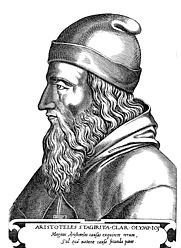
ARISTOTELES
STARIGITA
A Philosopher, 384-322 B.C. |
Return
|



















